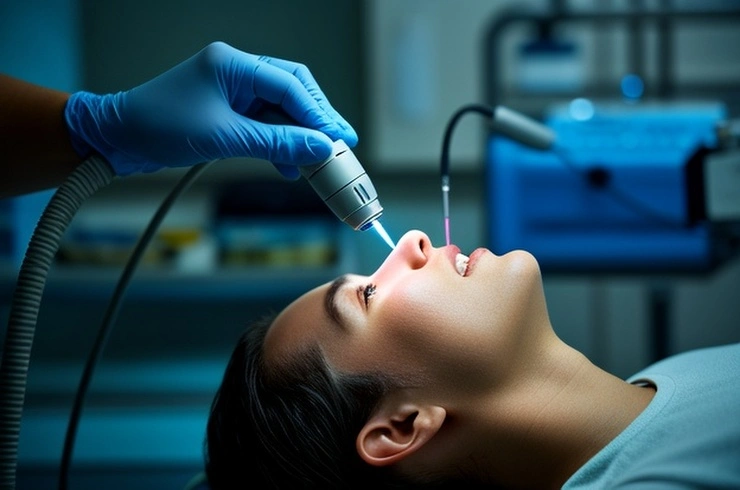
Lasers have been an integral part of dental practices since 1994, offering a modern approach to various oral health issues. While the FDA has approved their use, the American Dental Association (ADA) maintains a cautious yet optimistic stance, as no laser system has yet received their coveted Seal of Acceptance, which signifies adherence to ADA safety and efficacy standards. It's important to distinguish these dental lasers from the "cold lasers" employed in phototherapy for pain and inflammation relief.
Despite the absence of the ADA seal, many dentists are actively incorporating lasers for a range of treatments:
Tooth Decay: Lasers efficiently remove decayed portions of a tooth and prepare the surrounding enamel for the subsequent filling, streamlining the restorative process.
Gum Disease: In cases of gum disease, lasers are utilized to reshape gum tissue and eliminate harmful bacteria, particularly during root canal procedures, promoting healthier gums.
Biopsy or Lesion Removal: Lasers provide a precise method for taking tissue biopsies to screen for cancer and for removing various oral lesions, including effectively alleviating the discomfort associated with canker sores.
Teeth Whitening: For in-office teeth whitening, lasers significantly accelerate the process. They activate a peroxide bleaching solution applied to the tooth surface, enhancing its whitening effect through concentrated energy.
How Dental Lasers Function:
At their core, all lasers generate energy in the form of light. In surgical and dental applications, this focused light acts either as a precise cutting tool or as a vaporizer for targeted tissues. When applied to teeth whitening, the laser functions as a heat source, amplifying the chemical reaction of the bleaching agents.
Advantages and Disadvantages of Dental Lasers:
Pros:
When compared to traditional dental drills, lasers offer several notable advantages:
Reduced Pain and Anxiety: In many instances, laser treatment can cause less discomfort, potentially reducing the need for anesthesia and easing patient anxiety often associated with the dental drill.
Minimized Bleeding and Swelling: During soft tissue procedures, lasers help to significantly minimize bleeding and post-treatment swelling, contributing to a quicker recovery.
Preservation of Healthy Tooth: During cavity removal, lasers often allow for the preservation of more healthy tooth structure compared to conventional drilling.
Cons:
Despite their benefits, dental lasers also have limitations:
Incompatibility with Existing Fillings: Lasers generally cannot be used on teeth that already have fillings in place.
Limited Procedural Scope: Lasers are not suitable for many common dental procedures. For example, they cannot be used to fill cavities located between teeth, around older fillings, or large cavities requiring crown preparation. Furthermore, they are ineffective for removing defective crowns or silver fillings, or for preparing teeth for bridges.
Continued Need for Traditional Tools: Even when a laser is used, traditional drills may still be necessary for tasks such as shaping the filling, adjusting the bite, and polishing.
Anesthesia May Still Be Required: Laser treatment does not entirely eliminate the need for anesthesia in all cases.
Higher Cost: The primary disadvantage is the cost. Dental lasers are significantly more expensive than traditional drills, ranging from a few thousand dollars to over $100,000 for advanced systems capable of tooth cutting, which translates to higher treatment costs for patients.
Pro Tip
The content of the article is shared by netizens, please carefully identify it